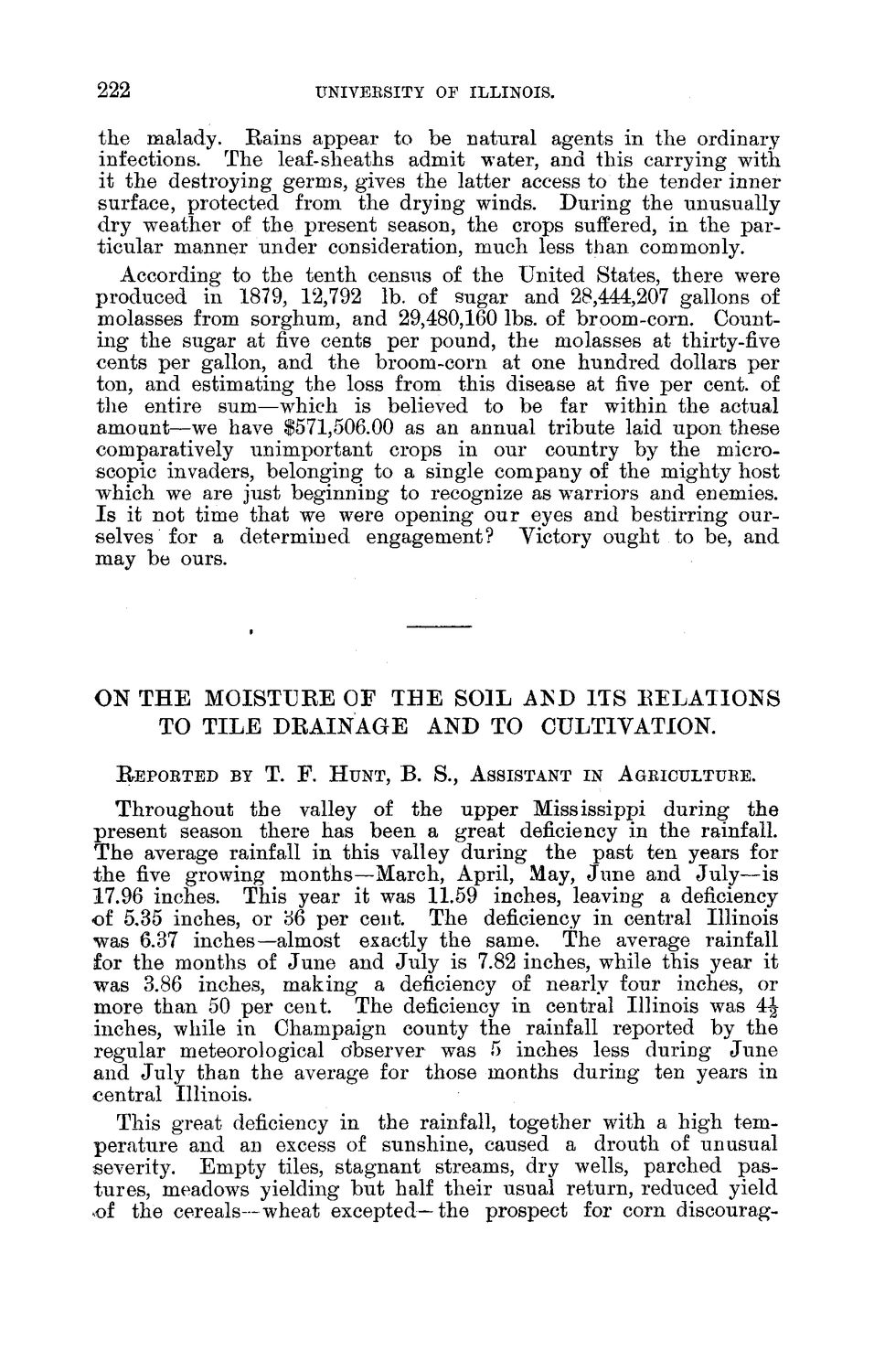| |
| |
Caption: Board of Trustees Minutes - 1888
This is a reduced-resolution page image for fast online browsing.

EXTRACTED TEXT FROM PAGE:
222 UNIVERSITY OF ILLINOIS. the malady. Rains appear to be natural agents in the ordinary infections. The leaf-sheaths admit water, and this carrying with it the destroying germs, gives the latter access to the tender inner surface, protected from the drying winds. During the unusually dry weather of the present season, the crops suffered, in the particular manner under consideration, much less than commonly. According to the tenth census of the United States, there were produced in 1879, 12,792 lb. of sugar and 28,444,207 gallons of molasses from sorghum, and 29,480,160 lbs. of broom-corn. Counting the sugar at five cents per pound, the molasses at thirty-five cents per gallon, and the broom-corn at one hundred dollars per ton, and estimating the loss from this disease at five per cent, of the entire sum—which is believed to be far within the actual amount—we have $571,506.00 as an annual tribute laid upon these comparatively unimportant crops in our country by the microscopic invaders, belonging to a single company of the mighty host which we are just beginning to recognize as warriors and enemies. I s it not time that we were opening our eyes and bestirring ourselves for a determined engagement? Victory ought to be, and may be ours. ON T H E M O I S T U R E O F T H E SOIL AND I T S E E L A T I O N S TO T I L E D K A I N A G E AND TO CULTIVATION. BrEPOKTED BY T . F . H U N T , B . S . , ASSISTANT IN AORICULTUEE. Throughout the valley of the upper Mississippi during the present season there has been a great deficiency in the rainfall. The average rainfall in this valley during the past ten years for the five growing months—March, April, May, June and July—is 17.96 inches. This year it was 11.59 inches, leaving a deficiency of 5.35 inches, or 36 per cent. The deficiency in central Illinois was 6.37 inches—almost exactly the same. The average rainfall for the months of June and July is 7.82 inches, while this year it was 3.86 inches, making a deficiency of nearly four inches, or more than 50 per cent. The deficiency in central Illinois was 4^ inches, while in Champaign county the rainfall reported by the regular meteorological observer was 5 inches less during June and July than the average for those months during ten years in central Illinois. This great deficiency in the rainfall, together with a high temperature and an excess of sunshine, caused a drouth of unusual severity. Empty tiles, stagnant streams, dry wells, parched pastures, meadows yielding but half their usual return, reduced yield of the cereals—wheat excepted—the prospect for corn discourag-
| |